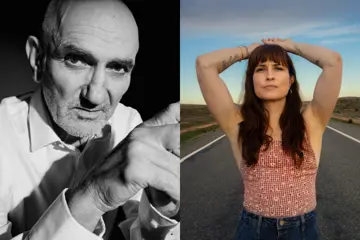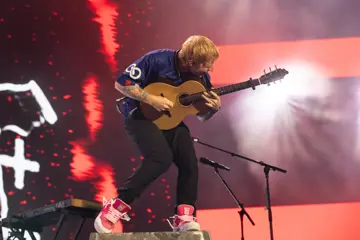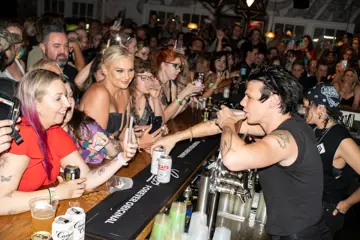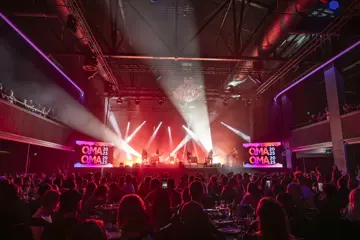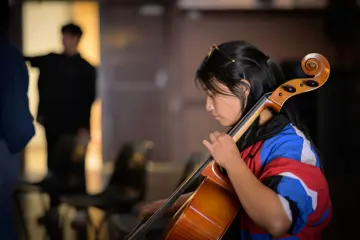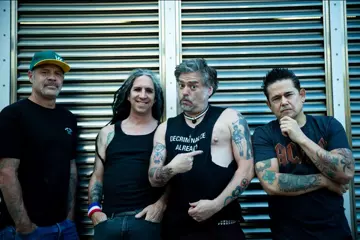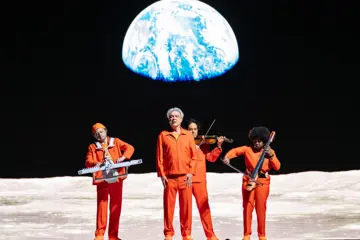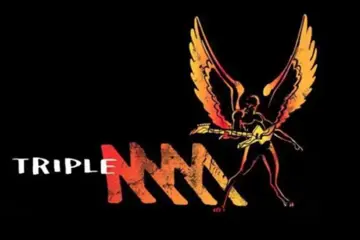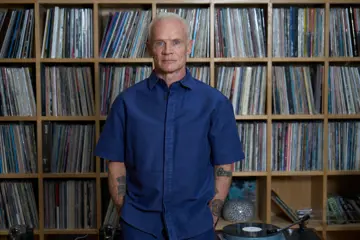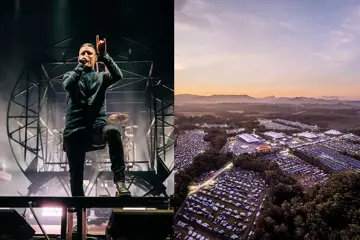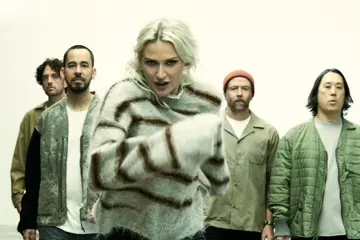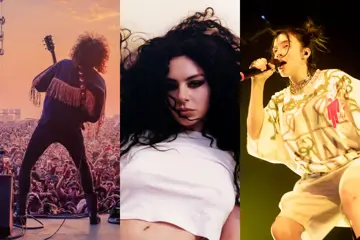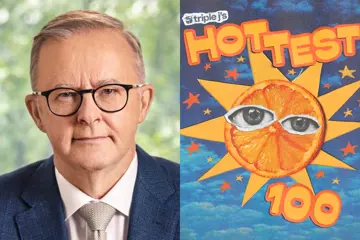The template of the trilogy — as minted by George Lucas in his original, pre-digital Star Wars glory days — demands that the opening salvo set the stage, the second instalment get dark, and then the heroic finale stir up the feel good, delivering teddy-bears/ghosts-in-the-sky and/or adorable/sentimental equivalent.
The Hunger Games already refused to fit the formula by dividing its third film into two parts; an act less of quadrilogical storytelling, more marketing.
But with the arrival of The Hunger Games: Mockingjay Part 2, we see that the narrative itself has no interest in sending audiences away with a smile on their faces. There’s no teddy-bears nor ghosts in the sky nor adorable/sentimental equivalent. No rote triumph of good over evil. No sense of things in this cinematic world being ‘put right’ in the neat fashion that fiction has, the chaos of reality turned into the order of fantasy.
Mockingjay Part 2 is a determinedly downbeat movie. It’s gloomy, weighty, grave; heroine Jennifer Lawrence spending the entire film wearing a permanent frown, her singular expression of furrowed brow and ashen-face only broken in those moments in which she yells, screams, or breaks down in tears. The film opens, quite bracingly —and wonderfully— with an unscored, intimate hospital examination scene. Lawrence bears the bruised neck and ruined vocal cords of being strangled, at the end of Part 1, by the suddenly-murderous Josh Hutcherson, who —like Reggie Jackson in The Naked Gun before him— can now be triggered to function as brainwashed assassin.
This introduces a recurring visual motif: of Lawrence as bruised and battered, wearing the wounds of the ongoing war on her suddenly-frail form. Having stared death in the face at the hands of her conditioned-to-kill TV boyfriend, her return to health —and the progress and tactics of rebel leader Julianne Moore and PR/military-strategist Philip Seymour Hoffman— seems slow and painful.
Don't miss a beat with our FREE daily newsletter
On the frontlines of insurrection, the air hangs heavy, and Mockingjay Part 2’s mood follows suit. Even the theoretical joy of an Irish wedding is quickly turned mournful, melancholy: its zippy fiddle music faded out for sad, solemn strings, the sounds of revelry pulled away. This serves two purposes: to show that, for Lawrence, even dancing a merry jig is a joyless duty, another piece of myth-making propaganda. And: to take us into her mind, whose silence marks her (albeit transient) transformation into a zen-like assassin, her life given the clarity of purpose: she must kill the Stalinist president of the saga’s moneyed Capital, Donald Sutherland.
Audience desire for such by-her-divine-hand vengeance is goosed in an early scene that seeks to turn Sutherland into a singular villain. At a lavish dinner in his gilded palace, he poisons an unfortunate underling for poor performance, in that classic trope on loan from a million action movies (not to mention: Star Wars itself). Here, the wealthy man —not money itself— becomes the root of all evil. It marks quite a change from the more complex political picture painted in Part 1, but, gladly, this momentary employment of genre cliché rankles for a reason: it’s a total misdirection.
No sooner has Lawrence attempted to make this a singular, simplified revenge mission than the picture is duly muddied. Her attempts to go “rogue” are comically naïve: celebrity that she is, crowds part and gawp at her wherever she goes, no matter how low she pulls the black hood of her ninja-dress-up outfit.
Moore and Hoffman are always watching on, anyway, behind a bank of screens; producers of this televised revolution. Instead of trying to curb the Mockingjay, they hijack her myth, turning not-by-the-book acts into carefully-curated PR moves. So, her girl-on-a-mission, action-hero vigilantism is massages into a stage-managed ensemble-cast PR-op; in which the “stars” of the rebellion are to be broadcast as they head heroically towards the Presidential Palace, wandering through the ruined streets of the Capital like the rag-tag crew of a war-movie.
This crew includes a quasi-rehab’d Hutcherson and romantic rival Liam Hemsworth; Sam Claflin, fresh from his marital vows; video-makin’, head-tattooed Natalie Dormer; the mute, bearded Mighty-Duck-grown-up Elden Henson; swaggering, straight-shootin’ Mahershala Ali; rule-following stooge Michelle Forbes; some gamine Nordic twins who have no lines; and some other forgettable fodder due for imminent demise.
Their progress is slowed by a string of video-game-ish set-pieces, in which elaborate —sometimes nonsensical— booby-traps have been set up on every block. The deaths of these peasants have, once again, been turned into “sport” (“welcome to the 76th Hunger Games,” Claflin says, wryly; providing unintentional comedy for those who feel as if the franchise has been dragged out, and drags on). As the traps pick off the pack one-by-one, you get that survival-movie sense of the Hollywood star-system at macabre screenwriting play: the less famous you are, the earlier you die.
For one stretch, Mockingjay Part 2 even just becomes a horror-movie. When the gang head underground to avoid the devilish death-traps above, they plunge into a nightmarish world that seems at odds with the series: going down a manhole like going through the looking-glass, the world of the sewers a subterranean realm of outright fantasy. At first there’s just the old Alien vibes of dark corridors, meek lights, the repetitious beeps of surveillance devices, and eerie noises. But, apparently, the shadowy catacombs beneath the capitol are populated by marauding hordes of eyeless, flesh-eating humanoids; as if our travelling troupe are tourists, taking a sideways cinematic spelunk into The Descent.
Aboveground, Sutherland takes to the TV to warn the frocked-up 1%ers of the capital of the imminent threat of the advancing terrorists. “They do not share our values,” he says, “they are coming to destroy our way of life”. And, as he does, there’s eerie political resonance: these are the same virtuous platitudes heard the world over in the past week. The fantasy of cinema, in those moments, comes uncomfortably close to real-world terror, made even more uncomfortable by the fact that the heroes, in this cinematic scenario, are the radicalised insurgents out to take down a culture of decadent excess.
It’s at this point that the political awareness of Hunger Games is fully revealed. What began as a reality-television parable becomes, instead, a portrait of entrenched social systems; of how a lordly villain is a symptom of endemic oppression and state control, not their cause. As the palace is ransacked in revolution, notions of ‘right’ and ‘wrong’ seem polyanna-ish.
In most real-world coups d’état, the leader of the insurrection tends to just take over the position of power, keeping the extractive economic policies and exclusive political systems in place as they assume control. Once out of the fire of battle and the rubric of rebellion, they’re merely taking their turn on the throne; Golden crown swapped out for military beret, but little else changed. It’s a notion at odds with the reductionist, dated, essentially-offensive ideas of good-vs-evil that we’re still served up, cinematically.
Gladly, unlike the endless annex’d super-hero franchises, The Hunger Games harbours no desire to present audiences simplistic satisfaction. “The thirst for blood is difficult to quench,” Moore says, sagely. At the end of Mockingjay Part 2, at the end of this series, the ultimate overthrow does nothing to quench such thirst, to sate the horrifying emotional toll of war, its endless, aching chasm of pure human loss. The great victory feels hollow, empty; there no joy in heroic homecoming when there’s no one there to welcome you, no home to return to.

